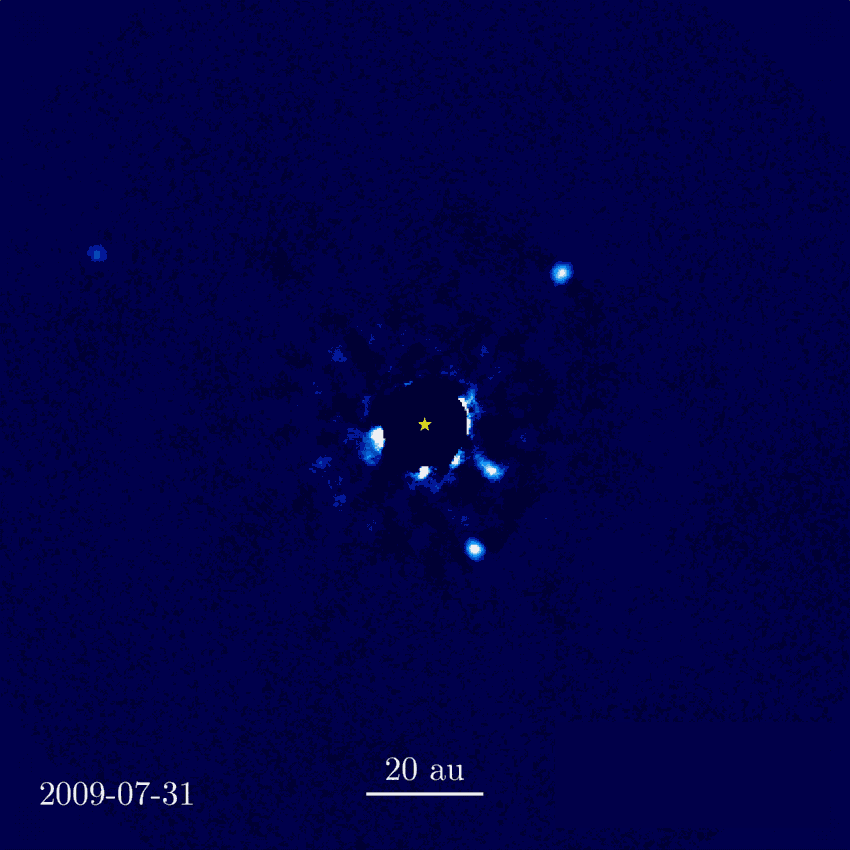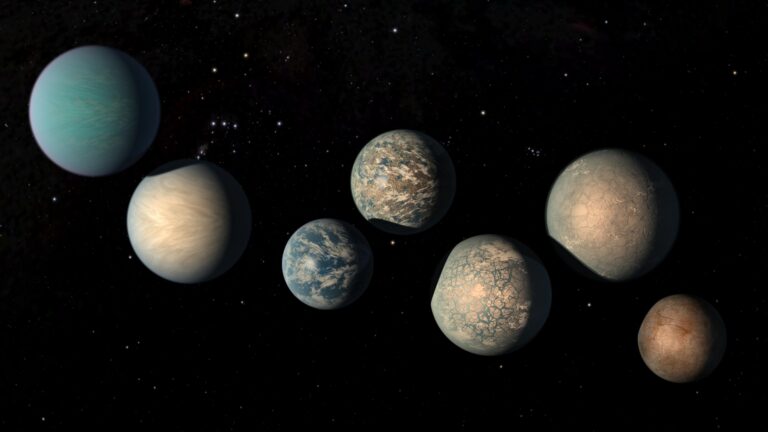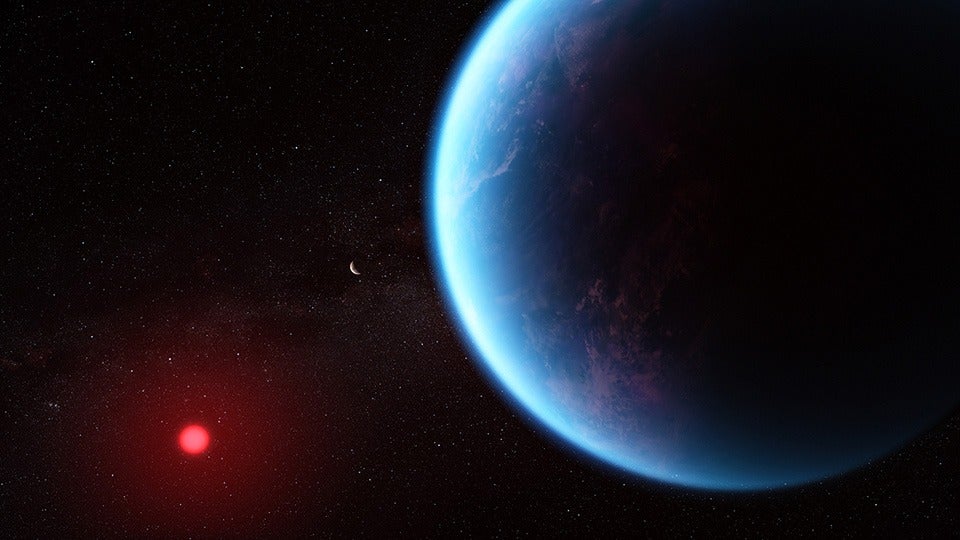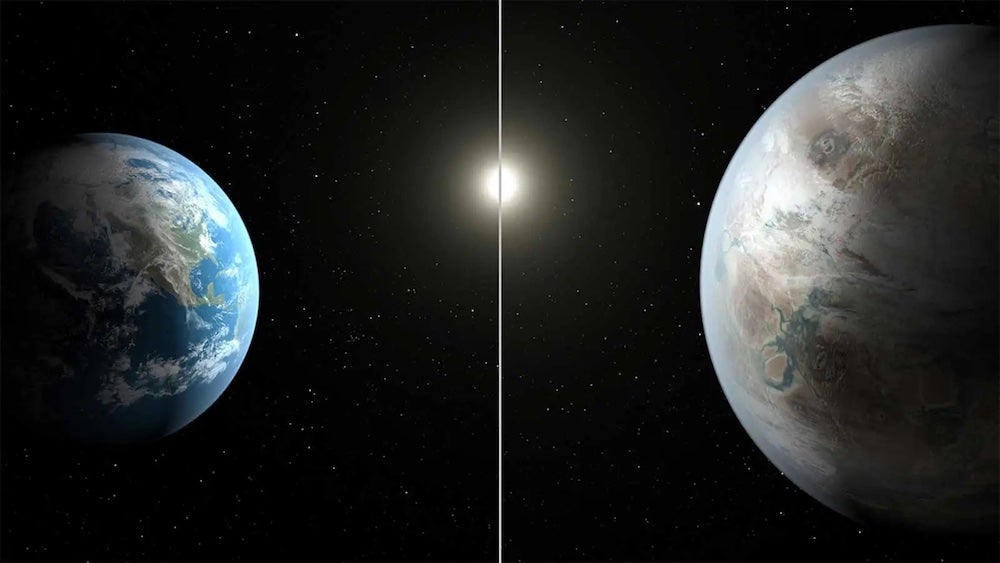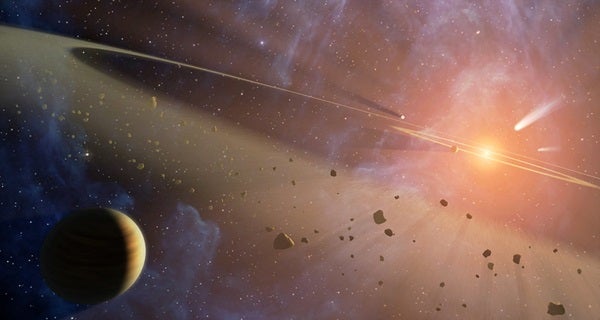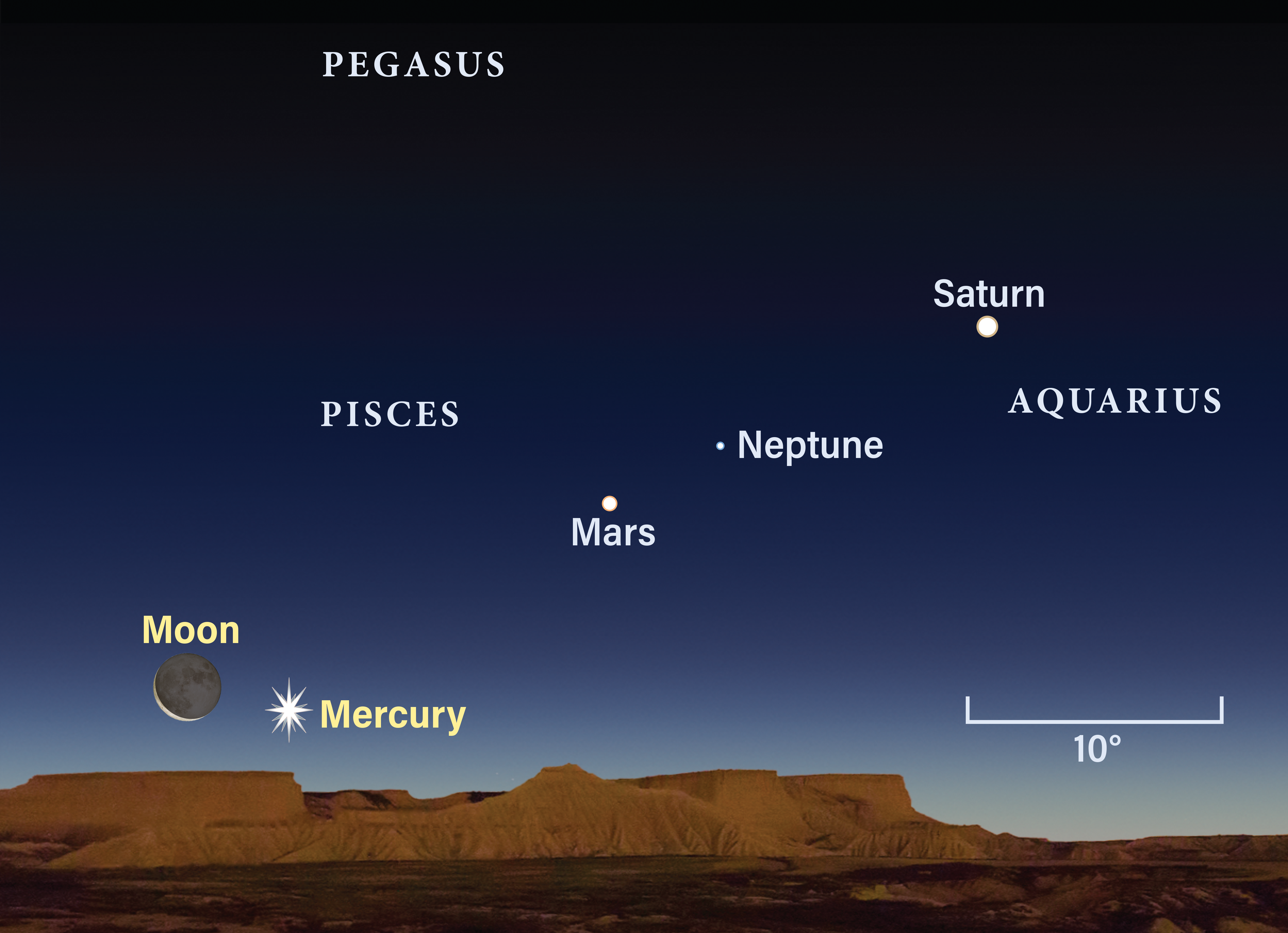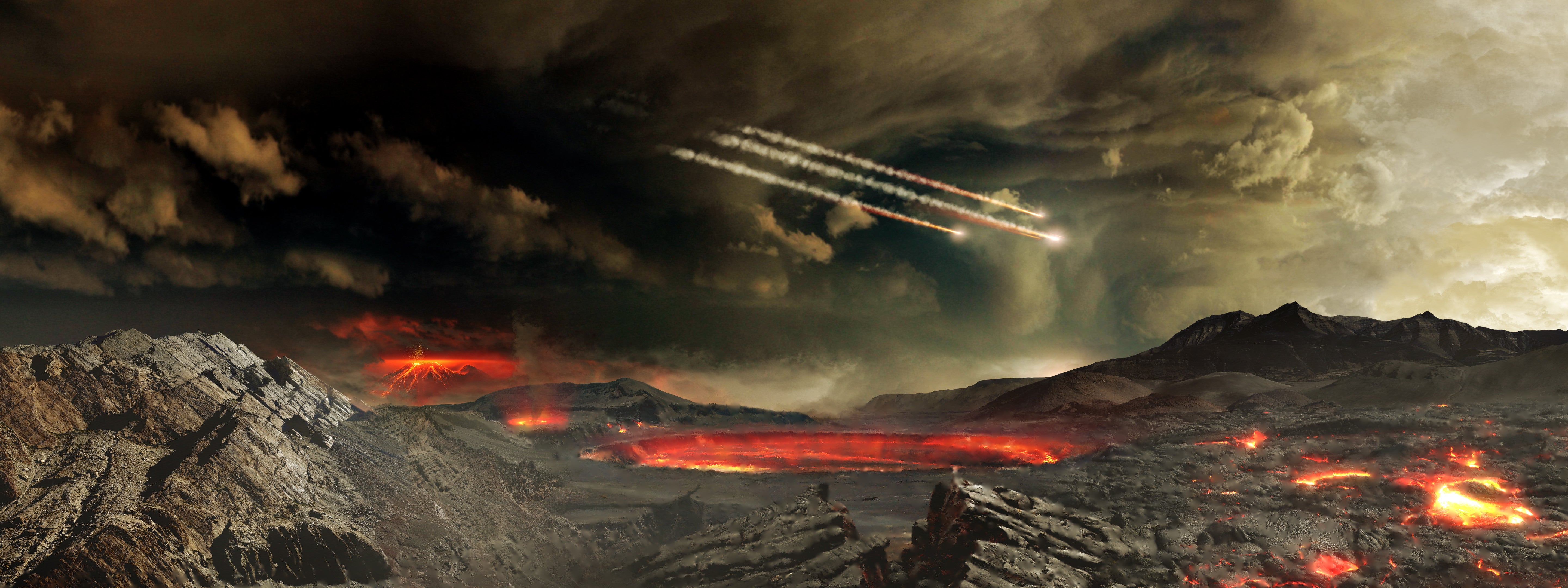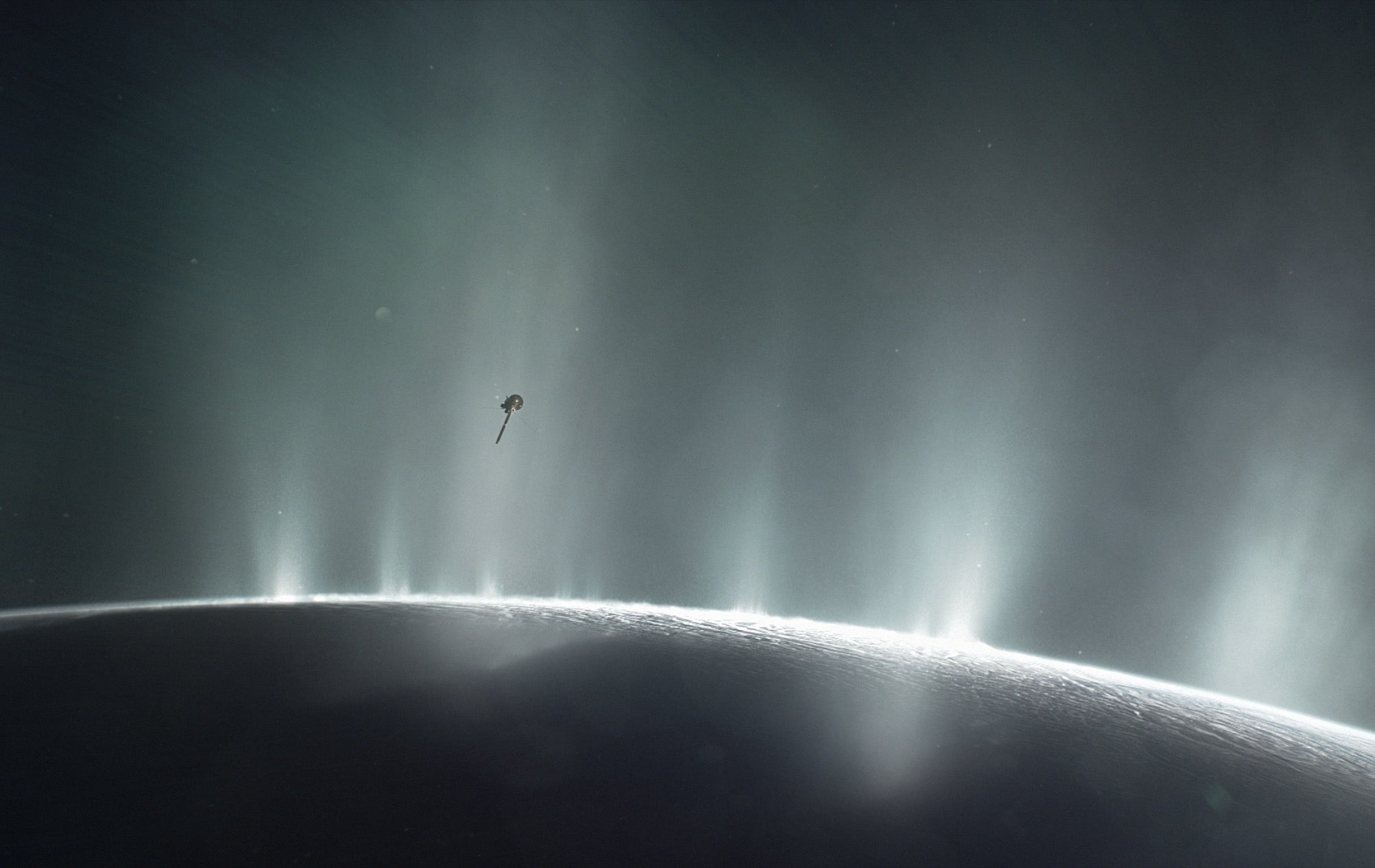Astronomers have imaged several young super-Jupiter planets around HR 8799 with the 8-meter Gemini North and 10-meter Keck telescopes in Hawaii. In fact, astrophysicist Jason Wang of Northwestern University even recently created a time-lapse video of the four worlds orbiting HR 8799 over the course of a 12-year period.
Keck and Gemini North were able to capture the planets around HR 8799 thanks to the telescopes’ infrared instruments, which pick up the heat emitted by the system’s warm, young worlds. The telescopes also deployed a technology called “adaptive optics,” which helps cancel out some of the blurring effects caused by Earth’s atmosphere.
However, if beings on an Earth-like planet orbiting HR 8799 pointed one of these telescopes at us, they likely would only see the Sun. That’s because our solar system’s planets are much older, cooler, and smaller than those orbiting HR 8799. They simply don’t emit enough light at infrared wavelengths to be seen by distant alien astronomers.
But aliens could succeed in spotting the planets of our solar system with a different instrument. To do this, they would need to send the telescope into space and outfit it with a device called a coronagraph to block the Sun’s obscuring glare. This device would make our planets stand out better against the background sky.
With these modifications, aliens could image Venus, Earth, Jupiter, and Saturn. The scientists could also track the planets’ orbits and collect spectroscopic data that would reveal Earth’s water and oxygen, as well as carbon dioxide on Venus and methane on Jupiter and Saturn.
[Editor’s note: This article was updated Feb. 8, 2023.]

